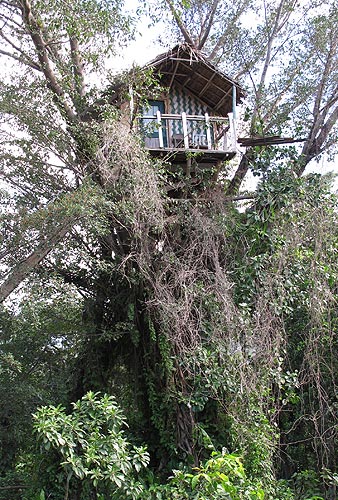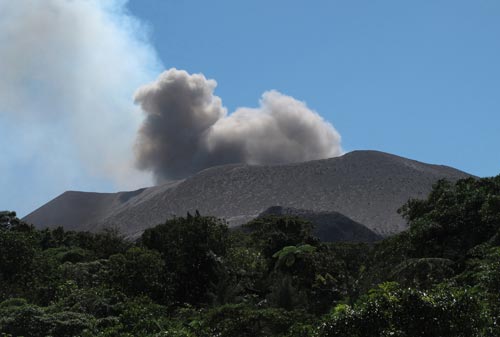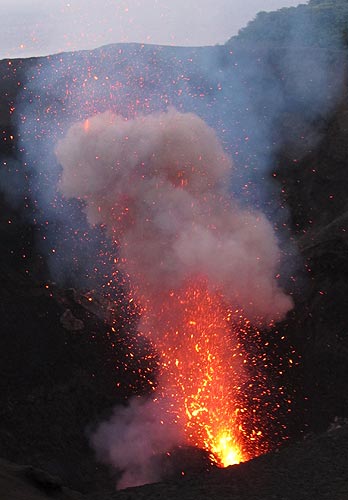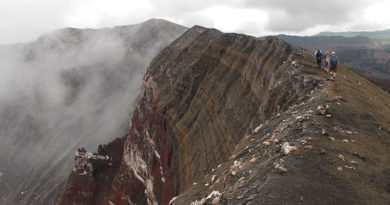The tree houses of Tanna
When it comes to toys and tree houses, no man ever really grows up. Just ask any woman.
So when I saw the ultimate tree house, perched high in the branches of a banyan tree overlooking a smoking volcano, I knew I’d found the lodgings of my dreams.
A night earlier I’d flown to Vanuatu’s Tanna Island, famous as the home of one of the world’s most accessible active volcanoes, from the capital Port Vila.

From the grass airstrip on the island’s west coast it was a long, bone-shaking ride on dirt roads in the back of a ute to the island’s southeastern corner.
There was nothing wrong with my first night’s accommodation. It had a palm-thatch roof with woven walls painted blue and white, and was surrounded by tropical flowers and immaculately swept sand paths.
But it wasn’t a tree house.
There are plenty of tree houses on Tanna. Some are little more than huts on stilts or houses surrounded by trees, but some are the real thing.
They are usually built in the forks of a banyan, a magnificent member of the fig family that starts its life as an epiphyte in the branches of a more modest tree.
The banyan slowly strangles its host and drops a multitude of aerial roots that can grow as thick as the original trunk.

The resulting tree can cover an area as large as 1.5ha, about the size of two rugby fields.
In Vanuatu the sheltered area under a banyan is often used as a village meeting place. The botanical giant also makes an ideal roost for a tree house.
I spotted “my” tree house while exploring Tanna on foot.
It was poking above the bush, about 15m above the ground in the crown of a banyan tree, and accessed by a wooden staircase supported here and there by struts and posts. A flimsy handrail was attached for decorative rather than functional purposes.
The house itself had woven walls and a thatch roof; inside was just enough room for a double bed with the obligatory mosquito net and a tiny bedside table.
But it was the balcony that really sold me. It sagged alarmingly in one corner but looked straight out over the world’s most reliably active volcano just a few kilometres away.
Mt Yasur smokes and rumbles all day; by night it spits glowing lumps of lava which fall from the sky in slow arcs like a never-ending fireworks show. It has been erupting without interruption for about 800 years.
My only immediate problem was finding the owner of the tree house.
It took a bit of bush-crashing to reach the banyan tree with the dodgy staircase; a little more blundering in the forest led me to nearby Tree Tops Lodge, where I found the tree house owner’s mother.

It appeared the island was not exactly over-run with visitors because, after consulting her son, she set a price of 1000 Vatu (about $14) per night including breakfast and dinner.
Despite the challenges posed by regular dustings of volcanic ash, making drinking water scarce and crops hard to grow, meals were tasty and generously portioned.
Most nights dinner was some kind of vegetable curry; breakfast was heavy on papaya, fresh bread and home-made jam.
A generator powered lights in the dining room for a few hours every evening but my torch provided the only lighting in the tree house.
It was surprisingly cool at night and stars peeking through the thatch roof suggested it wouldn’t have provided much protection from rain. An overnight storm didn’t bear thinking about.

The tree houses of Tanna are hopelessly impractical, potentially hazardous, and – given the amount of hardwood that goes into building the steps – possibly environmentally unsound. They are not recommended to anyone prone to vertigo or needing regular night-time trips to the toilet.
However, they are also one of the few places in the world you can sit on a balcony above the tree tops and watch a volcano launch red-hot lava into the sky for little more than $10 a night. I wouldn’t have traded mine for any five-star hotel.
· · · · ·
Cyclone Pam devastated Tanna in March 2015, shortly after my visit.
At the time the second most intense tropical cyclone to hit the South Pacific, it claimed five lives on Tanna and destroyed many homes along with the island’s fledgling tourist infrastructure – including the tree houses.
However, the Ni-Van (people of Vanuatu) are known for their resilience and positivity. Rebuilding is well under way and visitors are likely to receive an even warmer welcome than usual.




